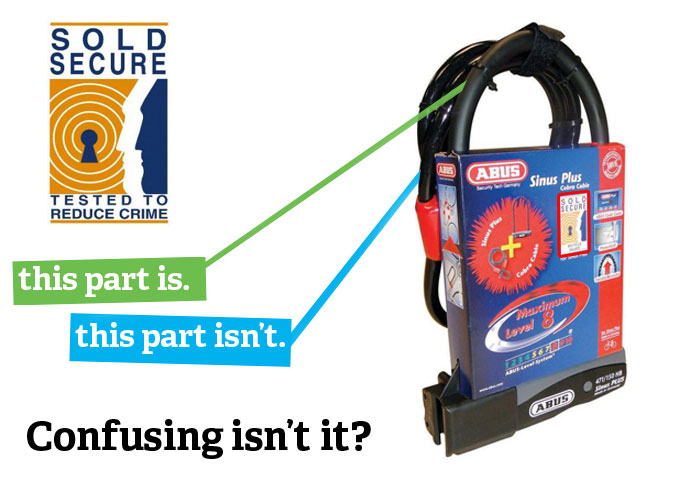An increasing number of cyclists are falling victim to theft because the flimsy cables they use to secure their bikes can be cut in seconds.
Good quality, Sold Secure-rated D-locks are commonly sold with a cable accessory – a length of flimsy, plastic-coated metal cable intended to secure quick-release wheels and not the bike itself. Problems arise because it is easy to mistakenly assume the cable has the same security rating as the D-lock with which it is sold. The lock packaging does little to explain that the cable element is not security rated and must not be used to secure the bike.

Even Sold Secure, the independent organisation that tests bike locks in Britain, rarely makes clear that its rating applies only to the D-lock in such cases.
Securing a bicycle with a cable accessory, using the D-lock as little more than a padlock, makes it incredibly easy to steal and falls foul of cycle insurance policy requirements. As demonstrated by our film, the cables can be cut in a second. Even a junior hacksaw, which can be bought for £1, can cut through the cable in only 80 seconds.
Bicycle thief vs cable lock
How can I tell if my lock is secure?
Most good locks sold in Britain have been tested by Sold Secure and awarded a rating of either bronze, silver or gold. Using a Sold Secure-rated lock when a bike is left in public is a staple requirement for most cycle insurance policies.
Unfortunately, when a D-lock and cable set is marked as Sold Secure, the rating applies only to the D-lock element.
Use cables with care. They can be useful to secure quick-release wheels, but they offer very little security and if used incorrectly, invalidate cycle insurance.
A fully-comprehensive cycle insurance policy will cover quick release wheels against theft and not specify that they be locked with a cable.
Amoeba
D-Locks / U-locks are reasonably secure (if Sold Secure Gold approved) but heavy and useless to secure to most lampposts and much street furniture. Whereas cable locks are useless. I use either a U-lock or padlock & chain (SSG). A SSG padlock and chain is heavier than a U-lock, but at least it offers a bit more flexibility, but mine still won’t reach round a lamppost.
Always fill a U-lock with bike and pole / immovable object. Do not use the Sheldon Brown method, Sheldon was right about many things, but not about bike security.
BTW, never use a lock so it can be smashed against the ground, but a SSG lock should survive. But the crooks may use various attacks. QuickreleaseTV (Carlton Reid) looked at bike theft a while ago, with similar conclusions.
Remove QuickRelease skewers etc. and replace with ones that use tools, or keys.
Don’t leave your bike in bad places, especially overnight.
In risky areas, use two locks.
There’s loads of guidance about this available.
So far, I have never had a bike stolen.
David Lowe
What is the best way then to secure your bike , using sold secure scurity